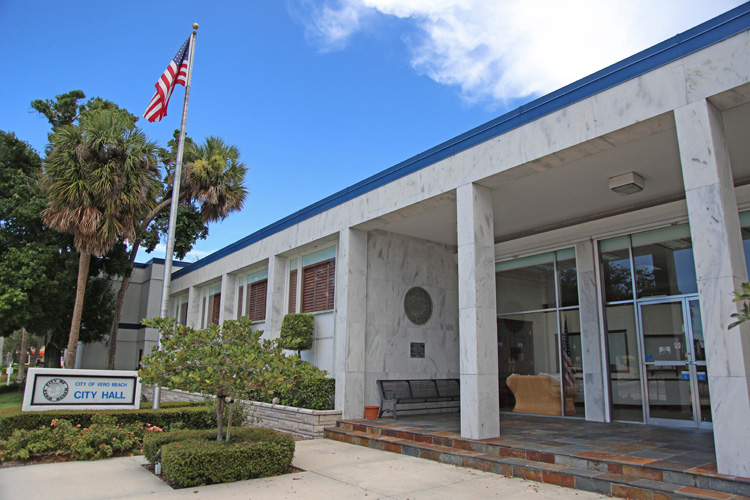
The two downtown-revitalization referendums overwhelmingly rejected by Vero Beach voters last week never should have been placed on the city ballot.
They never had a chance.
Not this year, anyway – and not when they were seeking permission to more than double the residential density limit in the city’s 50-acre downtown core to allow the construction of up to 1,800 studio, one-bedroom and two-bedroom apartments.
Even if you agree with urban-planning guru Andres Duany, who convinced the City Council earlier this year that the key to making downtown more vibrant was to get more young people to live there, this was the wrong time to ask the question.
Too many of us here are already concerned about the surge in population, traffic and home building we’ve seen since the arrival of the COVID-19 pandemic, which made the Vero Beach community an even-more desirable destination for people wanting to escape more-crowded urban areas.
Truth be told: The proposed density increase in the city’s downtown master plan probably wouldn’t have had much of an impact on the county’s pace of growth, and the new housing might’ve provided some added buzz to the neighborhood.
But proponents of the ballot initiatives, including four of the five council members, didn’t give leery voters enough time to digest the concept, especially with the city already engaged in other major projects.
Instead – despite the objections of exiting Councilwoman Tracey Zudans, who warned that “density is a scary word” for many city voters – the referendums were rushed onto this year’s ballot.
The reason?
Mayor John Cotugno and other council members said they wanted referendums of such magnitude to be decided during a presidential election, which produces the highest turnouts.
They also wanted to ride the momentum generated by Duany’s spectacular presentation of his vision of what the city’s downtown could become.
If you’ll recall: Duany advised the council to act quickly, saying projects that aren’t pursued expeditiously too often lose support, get shoved aside and eventually lose traction.
Surely, those move-forward-or-die fears were a factor, particularly for Vice Mayor Linda Moore and Councilman John Carroll, both of whom were re-elected to second terms last week and remain staunch proponents of rejuvenating the city’s downtown.
It would be naïve, however, to ignore the obvious – that at least some council members felt a need to do something to placate downtown business owners and other advocates who were unhappy with the panel’s refusal to embrace their renewed push to narrow the Twin Pairs to slow traffic through the area.
The reasons, though, no longer matter, because more than 65 percent of voters opposed the referendum to increase residential density from 17 to 36 units per acre in the downtown core and allow up to 1,800 units.
More than 63 percent voted against allowing downtown property owners to transfer development rights to permit the new owners to exceed 36 units per acre.
The voters have spoken.
There’s no need for the council or downtown advocates to push for another referendum next year. If there’s still a desire to increase residential density, supporters should target 2026 and use the next 24 months to make their case, easing voters’ fears and explaining why this initiative won’t create the dreaded slippery slope.
Advocates already have established a political committee and can raise the funds necessary to keep alive their quest and build new momentum.
Remember: It took years for the city to rally the community backing needed to move forward to the much-anticipated Three Corners project, which still doesn’t have a developer and isn’t anywhere close to a groundbreaking.
In the meantime, there’s plenty that can be done – without any referendum – to enhance the downtown experience.
“Obviously, I’m disappointed with the result of the referendum, but we can still make downtown a nicer place to go,” said Moore, co-owner of the Kilted Mermaid wine bar on Old Dixie Highway.
“I can think of a number of places to start.”
Pocahontas Park can be renovated. Street lighting can be updated. Storefronts and other downtown buildings can be spruced up with planters and awnings to improve the overall aesthetics of what proponents want to be a more-walkable neighborhood.
Moore suggested the council consider creating a community redevelopment agency (CRA) or business improvement district (BID) that would allow business owners and property owners to work in conjunction with the city.
She said a CRA can use property-tax revenue from a designated area to fund development projects, while a BID can levy special assessments to pay for such projects.
Jason Jeffries, the city’s planning director, said he expects the council to instruct him to move forward with improvements that can be made in the absence of the referendums through changes to the development-review process and updates to zoning and future land-use maps.
“We can still take a scaled-down approach and work around the edges,” Cotugno said, adding that he’s considering scheduling a special-call meeting to allow the council to discuss its post-referendum options. “We’re not going to do nothing.”
Contrary from what you’ll hear from advocates, most community residents are fine with downtown the way it is – and with the way it continues to organically grow its offerings over the past 10 years.
They have no problem with tidying up the place a bit.
But they’re not ready for more construction, more congestion, more of what they’ve been seeing all over the county the past four years. And you can’t blame them.
Maybe they’ll feel differently in two years.
All we know now is that city voters rejected both downtown referendums, and everyone needs to respect the outcome – because it wasn’t close.
“We can’t keep asking the same question over and over and expect a different answer,” Moore said. “If we do eventually come back with another referendum, we need to make sure it’s something people want.
“It can’t be the same question,” she added. “This one has been asked and answered.”
This one never had a chance.



